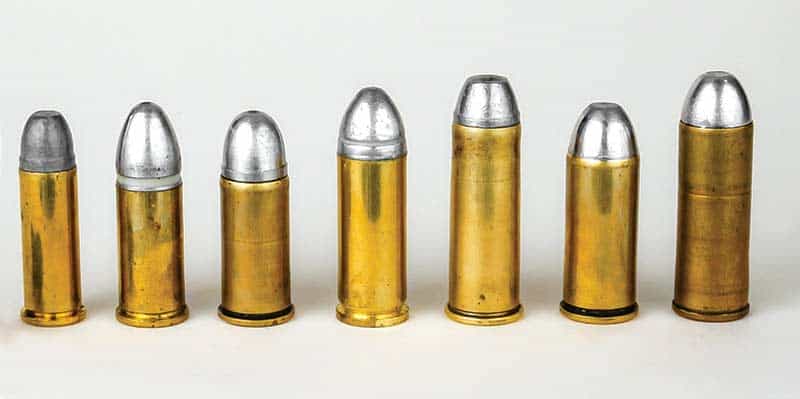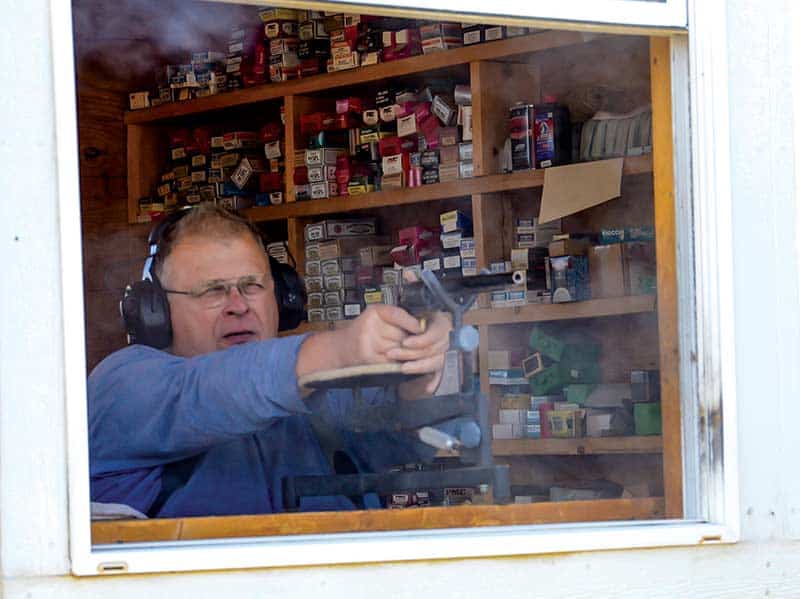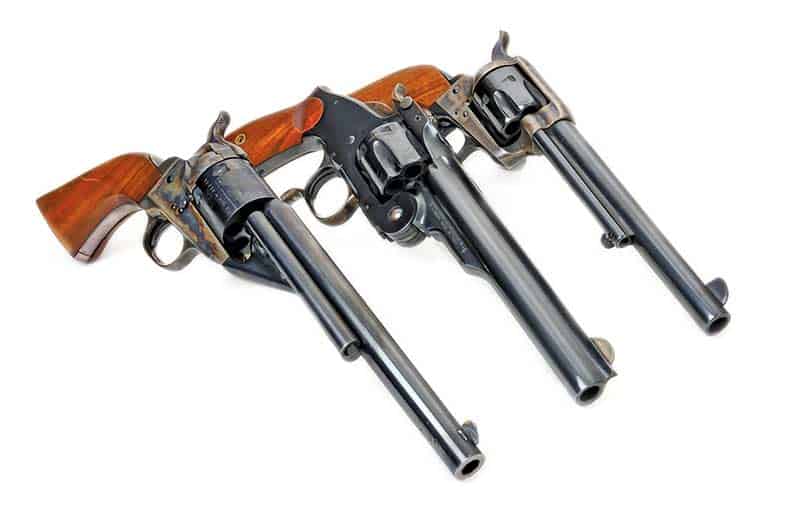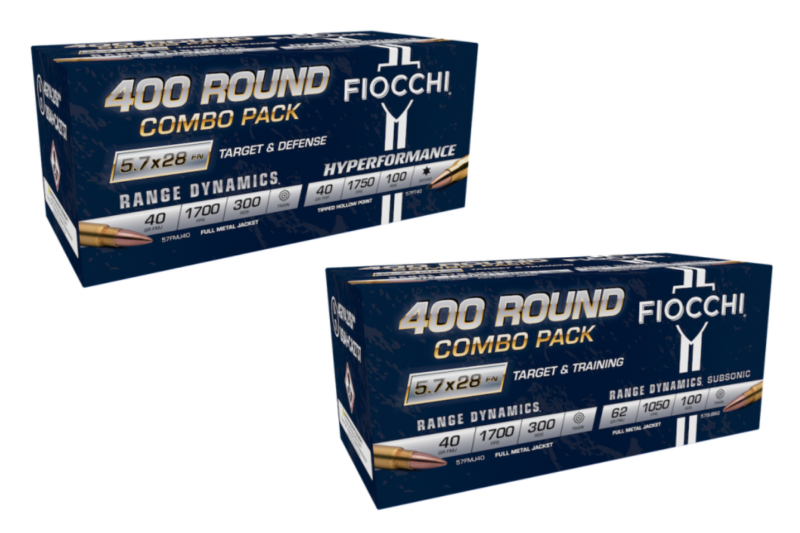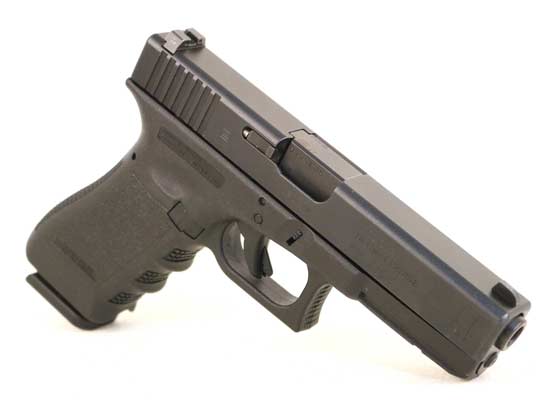Cartridge Power
The above cap and ball revolvers reigned supreme among fighting men in the Old West until the advent of metallic cartridge revolvers circa 1870. Did the new self-contained cartridges dramatically increase revolver firepower? They did in regard to speedy reloading, but not so much in terms of knockdown power.
Take, for instance, the .36 caliber Colts. Many of those were “converted” to fire .38 Colt rimfire and centerfire cartridges. In the 1990s I had one of Colt’s 2nd Generation Model 1861s converted to duplicate the very valuable originals. With a 130-grain heel-type bullet over 18 grains of black powder, it would barely break 700 fps. When the “long” .38 Colt version came along with a 145-grain bullet, it did break 700 fps by just a bit. When I fired those loads into a fence post on my property, the bullets’ bases were sticking out.
Handgun power did begin to progress. S&W developed .44 American and .44 Russian in 1871 and 1872, respectively. Colt’s .44 Colt also came in 1871. These rounds collectively carried bullets from about 210 to 255 grains, but none of them exceeded 750 fps from the 7½” to 8″ barrels of their various sixguns. In other words, they about equaled the hitting power of a modern .44 Special round with the traditional loading of a 246-grain round nose bullet at about 750 fps.
Many six-gunny folks today think Colt and the U.S. Government finally got on the ball in 1873 with the new Colt “Strap Pistol” (topstrap) and .45 Colt cartridge. It’s often touted about its load was 40 grains of black powder and 255-grain bullets. No. Not really. In January 1874 the .45 Colt was loaded by Frankford Arsenal with 250-grain bullets and 30 grains of powder. This load hit about 775 fps from the SAA’s 7½” barrel. By 1875, the U.S. Army also accepted S&W’s Model #3 Schofield .45 revolver. Its shorter cartridge only carried 28 grains of black powder with 230-grain bullets for 725 fps.
Finally, in 1878, Colt adapted their big single action to .44 WCF (.44-40) and got real power from a sixgun. The rounds did carry 40-grain powder charges with 200-grain bullets and velocity from 7½” barrels most certainly broke 900 fps.
Think about this: At the famous fight at the OK Corral most everyone had either a .45 Colt, .44-40 or perhaps even an S&W .44 Russian revolver. Not one combatant was put out of action with a single hit, except from Doc Holliday’s shotgun.
Subscribe To American Handgunner

